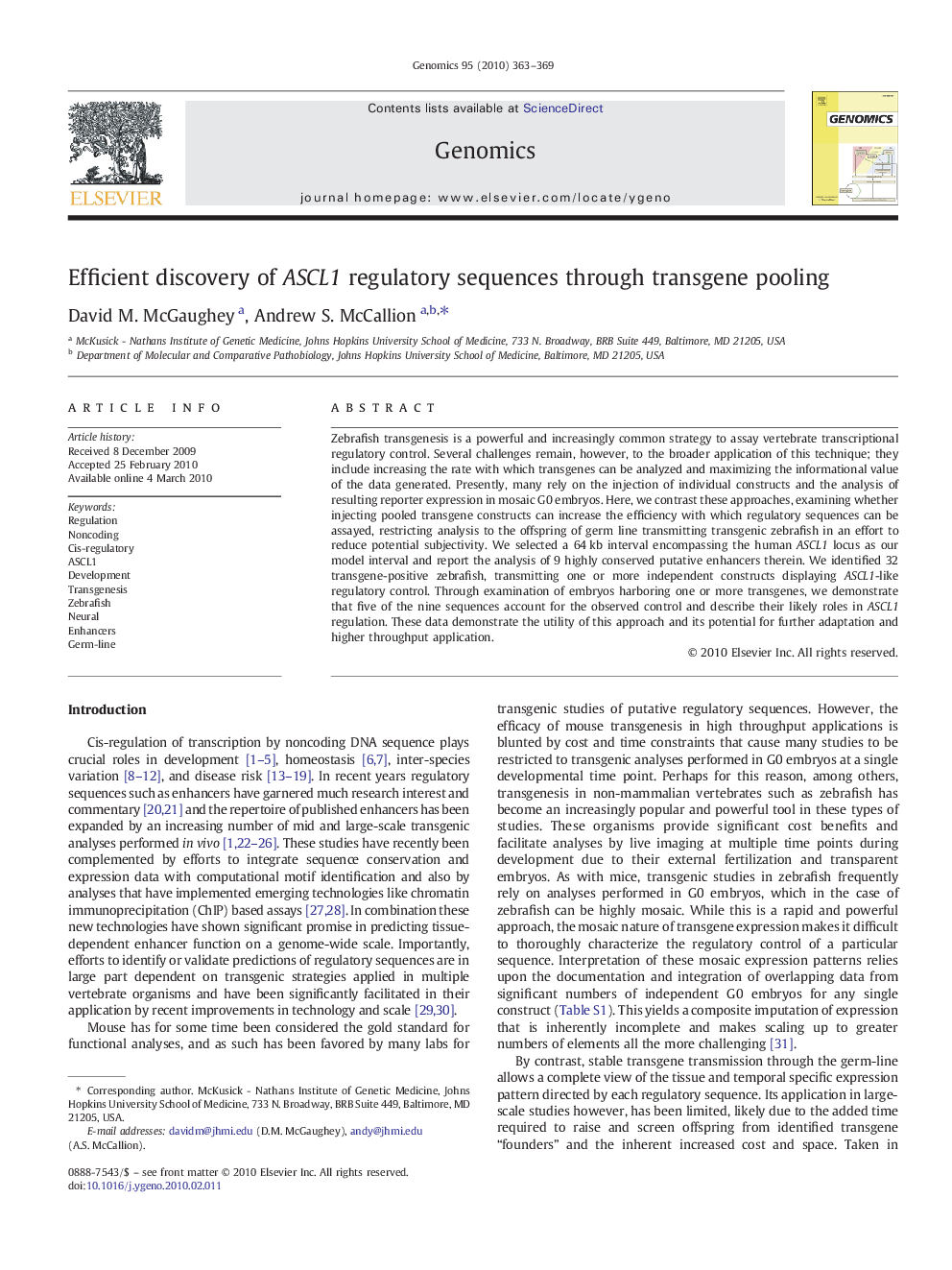| کد مقاله | کد نشریه | سال انتشار | مقاله انگلیسی | نسخه تمام متن |
|---|---|---|---|---|
| 2821459 | 1160953 | 2010 | 7 صفحه PDF | دانلود رایگان |

Zebrafish transgenesis is a powerful and increasingly common strategy to assay vertebrate transcriptional regulatory control. Several challenges remain, however, to the broader application of this technique; they include increasing the rate with which transgenes can be analyzed and maximizing the informational value of the data generated. Presently, many rely on the injection of individual constructs and the analysis of resulting reporter expression in mosaic G0 embryos. Here, we contrast these approaches, examining whether injecting pooled transgene constructs can increase the efficiency with which regulatory sequences can be assayed, restricting analysis to the offspring of germ line transmitting transgenic zebrafish in an effort to reduce potential subjectivity. We selected a 64 kb interval encompassing the human ASCL1 locus as our model interval and report the analysis of 9 highly conserved putative enhancers therein. We identified 32 transgene-positive zebrafish, transmitting one or more independent constructs displaying ASCL1-like regulatory control. Through examination of embryos harboring one or more transgenes, we demonstrate that five of the nine sequences account for the observed control and describe their likely roles in ASCL1 regulation. These data demonstrate the utility of this approach and its potential for further adaptation and higher throughput application.
Journal: Genomics - Volume 95, Issue 6, June 2010, Pages 363–369